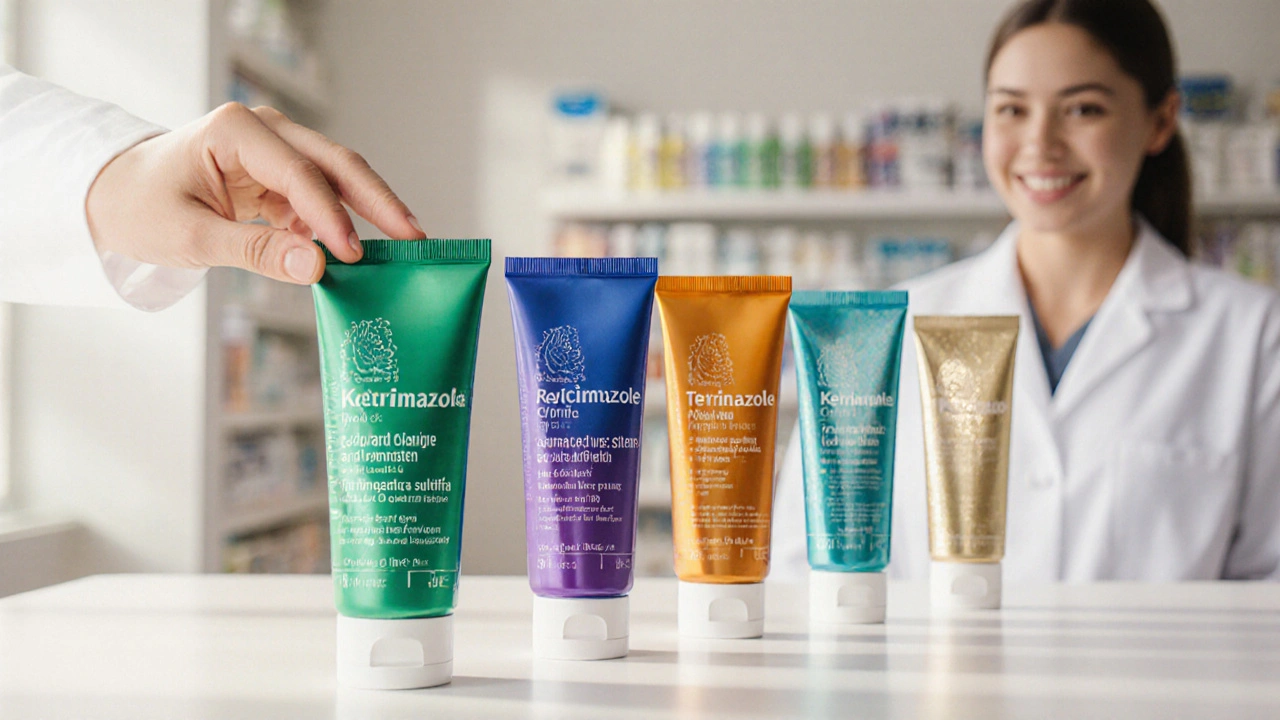Topical Antifungals: What They Are, How They Work, and What You Need to Know
When your skin itches, flakes, or turns red in a circular pattern, it’s often not a rash—it’s a topical antifungals, medications applied directly to the skin to kill or slow down fungi causing infections. Also known as antifungal creams or ointments, they’re the first-line defense against common problems like athlete’s foot, jock itch, and ringworm. Unlike oral antifungals, these work right where the problem lives—no pills, no system-wide side effects, just targeted relief.
Topical antifungals aren’t all the same. Some target yeast, others attack mold-like fungi, and a few work on both. Common types include clotrimazole, miconazole, terbinafine, and ketoconazole. You’ll find them as creams, sprays, powders, or even nail solutions. They’re not just for athletes or gym-goers—anyone can get a fungal infection, especially in warm, damp areas like between toes, under breasts, or around the groin. The key is catching it early. Left untreated, these infections spread, get worse, and sometimes even affect nails or spread to others in the household.
What makes topical antifungals different from antibiotics? Simple: they fight fungi, not bacteria. That’s why using an antibiotic cream for a fungal rash won’t help—it might even make it worse by killing off good bacteria that keep fungi in check. And while over-the-counter versions work for mild cases, stubborn infections often need prescription-strength formulas. If your rash doesn’t improve after two weeks, or if it spreads, it’s not just stubborn—it might be something else entirely, like eczema or psoriasis. That’s why knowing what you’re treating matters.
There’s also a big gap between what people think works and what actually does. Many grab antifungal creams on a hunch, use them for a few days, then stop when the itching stops. But fungi hide deep in skin layers. Stopping too soon lets them come back stronger. Most topical antifungals need 1–4 weeks of consistent use, even after symptoms fade. And don’t forget hygiene—damp socks, shared towels, and sweaty shoes are the real enemies. Clean them, dry them, and treat the area daily. That’s how you break the cycle.
These treatments aren’t just about clearing up a rash. They’re about stopping the spread—whether to your other body parts, your kids, or your partner. That’s why many of the posts here focus on real-world use: how to pick the right one, how to use it without wasting money, and when to skip the cream and see a doctor. You’ll find comparisons of top brands, tips for nail fungus that won’t budge, and even how some people use antifungals for recurring yeast infections on the skin. No fluff. No guesswork. Just what works, based on what people actually tried.
Whether you’re dealing with a stubborn foot infection, a rash that won’t quit, or just want to avoid the next outbreak, the guides below give you the facts—no marketing, no hype. You’ll learn what’s backed by evidence, what’s a waste of cash, and how to make sure you’re treating the right thing.

